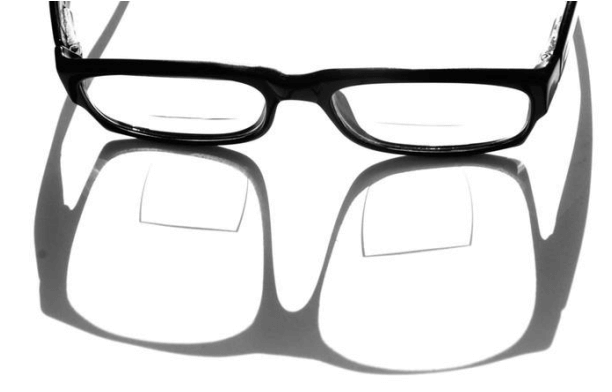Bifocal, Trifocal & Multifocal Lenses: What’s The Difference?
It is an inevitability that, around the age of 40, certain structures within our eyes deteriorate due to age. And with this newfound “maturity” of the eye, comes an unavoidable ageing refractive error called Presbyopia.
For some, it is a hard realization to grasp. After all, you can control how much you exercise, how well you eat, but this common refractive error is an inevitable eye phenomenon that affects everyone.
So what can be done?
Fortunately, with the modern advancements in eye care technology, there are some excellent options.
What Is Presbyopia?
Presbyopia is an age-related condition that results in blurry near vision. It often appears gradually; you will struggle to see a book or newspaper up close and will naturally move it further away from your sightline in order for it to appear clearly.
Does this sound familiar? A surefire way to find out if you have the onset of presbyopia is by booking a comprehensive eye exam with your optometrist.
At around the age of 40, the crystalline lens within the eye loses its flexibility. When young, this lens is soft and flexible, easily changing shape so it could focus light onto the retina. After age 40,the lens becomes more rigid, and cannot change shape as easily. This makes it harder to read ordo other close-up tasks.
Bifocal Glasses
Bifocal literally means “two focuses.” Fun fact: In 1784, Benjamin Franklin is credited with inventing the first bifocal lens by gluing two lens halves from two different lens prescriptions together.
In eyeglasses, bifocal lenses contain two different prescriptions: an upper section to allow for distance vision and an additional power on the bottom part of the lens to aid in close up focus. The result is vision clarity at both distance and near with one pair of glasses.
While bifocal lenses often contain visible lines or segments differentiating the areas of contrasting prescriptions, they are a great choice for some people who desire a wider lens area for reading and computer work.

Trifocal Glasses
Like bifocal lenses, the concept of trifocal glasses is the same. Except, in this case, there are a total of three focal points in one lens.
Like bifocals, the top section is for distance vision and the bottom is reserved for reading and other close tasks. The middle, however, is for intermediate vision, that lands somewhere between the two. An example of this intermediate zone is computer work (farther away than arm’s length, but closer than far distance).
Trifocals can be specialized and customized to certain careers or hobbies. For example, sports such as golf require a person to see a range of distances at one time. Your optometrist can help you specialize in trifocal glasses according to your individual lifestyle.
Progressive Multifocal Lenses
Like bifocal and trifocal glasses, progressive multifocal lenses enable the user to see clearly at different distance ranges through one lens. A progressive lens gradually changes power from the top of the lens to the bottom, giving a smooth transition from distance vision to intermediate/computer vision to near/reading vision.
Unlike bifocals or trifocals, progressive multifocal lenses do not have distinct lines or segments and have the advantage of offering clear vision over a large range of distances, not limiting you to two or three distances. This makes them a popular choice for many people.
However, not all progressive multifocal lenses are created equal. They come in a variety of designs and styles. Since the overall design of a progressive lens tends to distort the edges of the lens, it is in one’s best interest to choose a high quality, wide mid-range, and reading area. This will minimize adaptation as well as provide the best overall comfort and clarity in all situations.

There are four main factors that determine patient success with progressive multifocal lenses:
The Brand
Higher-end progressive multifocal glasses have advanced optical designs allowing for smooth adaptation and enhanced vision and comfort. Your vision is something you use every day - it is important to have the correct lens for you. The optician at Shady Grove Eye And Vision Care will take the time to ensure you have the best lens brand for you.
The Measurements
Precise measurements are crucial to your success with progressive multifocal lenses. Improper measurement is the primary reason for non-adaptation to progressive lenses. It is important to ensure that you are looking through the optical center of your new lenses. This will allow you access to your clearest and most comfortable vision.
The Frame
Your choice in frame size, as well as proper adjustment of your frame, can determine your comfort level with your new lenses. If you are having difficulties adjusting, confirm with your optician first that your frame is properly fitted to your face. A simple frame adjustment could mean the difference between frustration and effortless vision.
The Adjustment Period
Often, patient motivation is the determining factor in adaptation to these lenses. You should expect an adjustment period of at least two weeks. If you give yourself the time to wear your new glasses on a consistent basis, you will adjust. When battling presbyopia, thankfully there are many options when it comes to eyewear. The team at Shady Grove Eye And Vision Care will ensure you have the best, most comfortable lens for your individual lifestyle.
